Spring Classics 2024: Essential guide to the races and riders
All you need to know about Paris-Roubaix, Tour of Flanders, and everything in between: A cycling enthusiast's in-depth companion to one of the most exciting periods of the race season
Patrick Fletcher
Deputy Editor
© Getty Images
A selection of the finest Spring Classics
In professional cycling, the best-known events are the Grand Tours, but while those epics may span three weeks, there are a set of races that cram their drama into just one day. These are the Classics, and most of them are condensed into a Spring period that's arguably the most intense, iconic, and electrifying of the whole season.
The Classics are a loosely-defined set of races – more on that later – but essentially they are all one-day events where the winner takes it all and the no-tomorrow style of racing stands in contrast to the steadier longer-term calculations of stage racers.
Although there is a period of Autumn Classics, and a couple of major one-day races sprinkled in the summer, the Spring represents the heart of the Classics, with four out of five of cycling's so-called Monuments taking place between March and April.
Giants such as Paris-Roubaix, the Tour of Flanders, and Liège-Bastogne-Liège date back in some cases to the 19th century, and this is what enhances their appeal – they are the most historic races the sport has to offer. With that heritage comes prestige, and titles in these races make legends of the sport.
Read on for our guide to the races and riders who'll be the centre of the cycling world this Spring.
Contents
Jump to:
2024 Spring Classics latest results
Women's Top 5
2024 Spring Classics latest news & features
- Mathieu van der Poel: ‘I don’t know how I got to the podium’ in Liège-Bastogne-Liège
- Breakaway gamble pays off for Grace Brown at Liège-Bastogne-Liège
- Mattias Skjelmose carried from bike as only 44 riders finish wet, cold Flèche Wallonne
- Tearful Lorena Wiebes laments ‘really stupid mistake’ in Amstel Gold Race sprint
- 'No photo finish needed today' – Tom Pidcock rights wrongs at Amstel Gold Race
- Paris-Roubaix: 8 things we learnt from the cobbled Classics climax
- Exhausted riders react to the fastest Paris-Roubaix ever
- Police identify culprit who threw beer at Mathieu van der Poel during Tour of Flanders
- Lotte Kopecky on Paris-Roubaix win: 'Today was exactly as we planned'
- Josh Tarling disqualified from Paris-Roubaix
- Paris-Roubaix: Moments that have defined cycling's most-loved Monument
- We tried Flemish beef stew and fries energy gel (so you don't have to)
- The top 10 cycling climbs in Flanders
- Analysis: Is the Van der Poel-Van Aert rivalry stretching to breaking point?
- 5 conclusions from Milan-San Remo
- Stat Attack: How many teams have won all five Monuments?
Shop the GCN Spring Race Collection
2024 Spring Classics tech
- A new era for Paris-Roubaix tech as aero bikes and wide tyres dominate
- Mathieu van der Poel requests rainbow redesign for his Canyon Aeroad
- Paris-Roubaix Femmes tech: How did teams set up their bikes for a day in hell?
- Mathieu van der Poel: 'I don't think the Paris-Roubaix cobbles are meant to be ridden on a road bike'
- What tyre width do pro cyclists use on the cobbles?
- Unreleased POC helmet worn by entire EF Education-Cannondale team at Brugge-De Panne
- Tubeless might be the future but tubular is still relevant inside the peloton
- Is the peloton actually taking the UCI’s lever position regulations seriously?
- Spotted: Lidl-Trek using a prototype Pirelli P-Zero Race tyre in the Classics
What defines a classic in cycling?
This is tricky territory, governed by nebulous terminology, and with enough inconsistencies to deny any one neat categorisation of all these races. Professional cycling wouldn't have it any other way.
What's the difference between Classics and Monuments?
The Classics are essentially the biggest and, as the name suggests, most historic one-day races. The concept started to form around Paris-Roubaix and its French cousins, Paris-Tours and Bordeaux-Paris in the early 20th century, although it would then take proper shape when multiple race organisers came together to set up the Colombo-Desgrange Challenge, a season-long series that included the Tour de France. The seven one-day races on that series are sometimes referred to as the original Classics: Paris-Roubaix, Tour of Flanders, Milan-San Remo, Liège-Bastogne-Liège, Il Lombardia, La Flèche Wallonne, and Paris-Brussels.
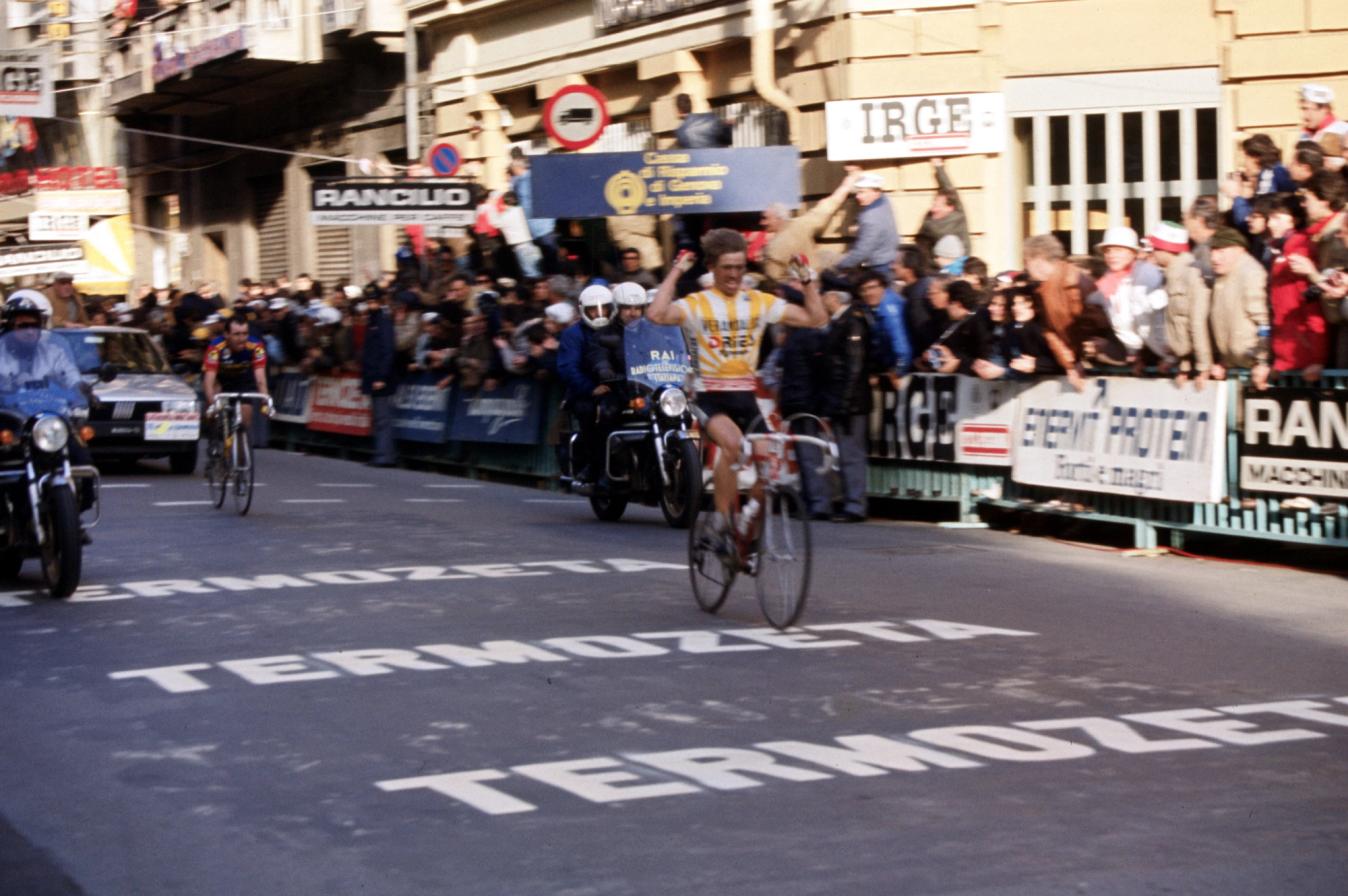
© Sirotti Stefano
Hennie Kuiper winning the 1985 Milan-San Remo
However, as other races came along, the criteria for what constituted a Classic was so up in the air that a new moniker was gradually born: Monument. There are, it has been widely agreed upon, five of them: Milan-San Remo, Tour of Flanders, Paris-Roubaix, Liège-Bastogne-Liège, and Il Lombardia.
It should be noted that the Monuments only exist in men's cycling, with women's cycling increasingly gaining counterparts to men's Classics, while also enjoying flagship events all of its own.
What is a Semi-Classic?
With the rise of the 'Monument' concept, the definition of a 'Classic' has broadened out to include a much larger range of races. Amstel Gold Race and E3, for example, are surefire Classics. At the same time, the concept became so unruly once again that we now have the term 'semi-Classic' for races which sit a further rung lower on the prestige ladder.
What are the Cobbled Classics, Ardennes Classics, and Northern Classics?
When it comes to the Spring Classics, you'll also hear mentions of the Northern Classics, which is a nod to the northern European location of races in France, Belgium, and the Netherlands.
Milan-San Remo, Trofeo Alfredo Binda and Strade Bianche sit away from that as two Italian Classics that don't quite have the same sense of cohesion.

© Getty Images
Mathieu van der Poel and Wout van Aert tussle at the 2023 Paris-Roubaix
When it comes to those Northern Classics, they are broadly split in two: Cobbled Classics and Ardennes Classics. The cobbles are found at Paris-Roubaix, the Tour of Flanders, and in nearly all the major Belgian races, traditionally suiting the most hardy and robust riders. Meanwhile, the Ardennes Classics, part of another broad church of so-called 'Hilly Classics', feature longer climbs in southern Belgium and Holland. The three Ardennes Classics are considered to be: Amstel Gold Race, La Flèche Wallonne, and Liège-Bastogne-Liège.
What makes a good Classics rider?
With so much variety in terms of the races, and so much specialisation in the modern peloton, Classics riders now come in various shapes and sizes. The traditional notion of a Classics specialist would be someone who's tough, hardy, and able to withstand some of the most attritional racing conditions that can be thrown at a rider.
When it comes to the Northern Classics, these are often big, strapping, powerful riders, bludgeoning their way over the cobbles with brute force rather than grace. When it comes to the hillier terrain, the featherweight climbers come more into the equation. There's also plenty on offer for the sprinters and puncheurs.
Whatever the physical requirement for the race in question, Classics riders need a cool head and tactical acumen to negotiate some of the most complex race situations while they're sitting at close to max heart rate.
Classics legends: Eddy Merckx, Roger de Vlaeminck, Anna van der Breggen, Sean Kelly, Fabian Cancellara, Marianne Vos, Rik Van Looy, Nicole Cooke, Tom Boonen
2024's leading Classics contenders
2024 Spring Classics: The full re-cap
Omloop Het Nieuwsblad
- When: 24 February
- Where: Flanders, Belgium
- First edition: 1945 (men), 2006 (women)
- 2024 winners: Jan Tratnik, Marianne Vos
Race Report & Results: Omloop Het Nieuwsblad Men
Race Report & Results: Omloop Het Nieuwsblad Women
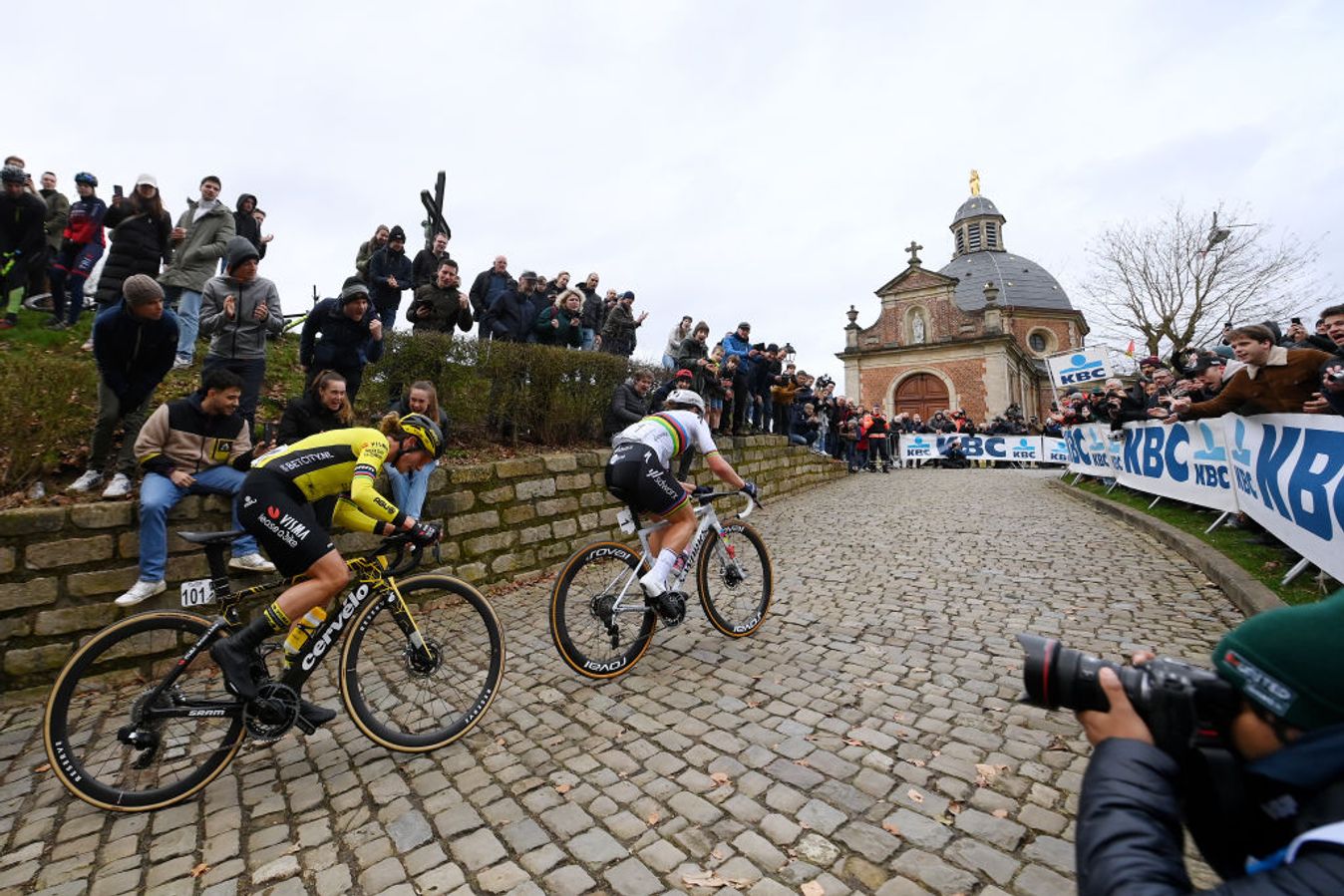
© Getty Images
The Omloop heads over the famous Muur in its finale
About Omloop Het Nieuwsblad
The early-season calendar has become increasingly populated and competitive over recent years, but traditionalists will still tell you that Omloop Het Nieuwsblad is where the season really begins. Either way, it’s very much the start of the Classics campaign, kicking off the Flemish Spring in style. Together with Kuurne-Brussel-Kuurne on the men’s side, and with Omloop van het Hageland on the women’s, the Omloop forms the first and foremost instalment in what’s widely known as the ‘Opening Weekend’.
The races start in Gent inside the famous ’t Kuipke velodrome and head into the Flemish Ardennes that will play host to the Tour of Flanders. In fact, in recent years the Omloop has revived the old Tour of Flanders finale, with the famous Muur van Geraardsbergen and Bosberg forming the final combination of difficulties ahead of the run-in to Ninove.
It’s a serious first test for the cobbled Classics contenders, but comes with the caveat of Flanders still being a full five weeks away. That’s a ready-baked excuse for a poor performance, and there’s even a warning in there, too. No man in modern history has won Omloop and Flanders in the same season, even if that doesn’t quite apply to the women, thanks to Lotte Kopecky last year and Lizzie Deignan in 2016. Still, the Omloop isn’t the be-all and end-all but it’s the perfect tone-setting introduction to the Spring.
Did you know? The race takes its name from a newspaper, Het Nieuwsblad, one of the two main Flemish dailies, with Omloop meaning ‘loop’, or ‘lap’, as well as the ‘circulation’ of a newspaper.
Kuurne-Brussel-Kuurne
- When: 25 February
- Where: Flanders, Belgium
- 2024 winner: Wout van Aert
Race Report & Results: Kuurne-Brussel-Kuurne
Taking place on the Sunday of the Opening Weekend, Kuurne-Brussel-Kuurne throws the men’s peloton back into the Flemish Ardennes, although it’s a route that brings the sprinters into the equation alongside the thoroughbred Classics riders.
Omloop van het Hageland
- When: 25 February
- Where: Flanders, Belgium
- 2024 winner: Kirsten Faulkner
Race Report & Results: Omloop van het Hageland
Like Kuurne, Omloop van het Hageland follows the day after the Omloop to form the second part of the women’s Opening Weekend. The race takes place in East Flanders and is a rugged affair, with the Roeselberg acting as the central climb, but it’s liable to be won in a sprint finish of some description.
Le Samyn
- When: 25 February
- Where: Wallonia, Belgium
- 2024 winners: Laurenz Rex, Vittoria Guazzini
Race Report & Results: Le Samyn
Race Report & Results: Le Samyn des Dames
Le Samyn is a Belgian semi-classic that takes place after the Opening Weekend, but down in the French-speaking Wallonia region. It has several short cobblestone sectors on its finishing circuit around Dour but often comes together for a reduced group sprint on a draggy home straight.
Strade Bianche
- When: 2 March
- Where: Siena, Italy
- First edition: 2007 (men), 2015 (women)
- 2024 winners: Tadej Pogačar, Lotte Kopecky
Race Report & Results: Strade Bianche Men
Race Report & Results: Strade Bianche Women
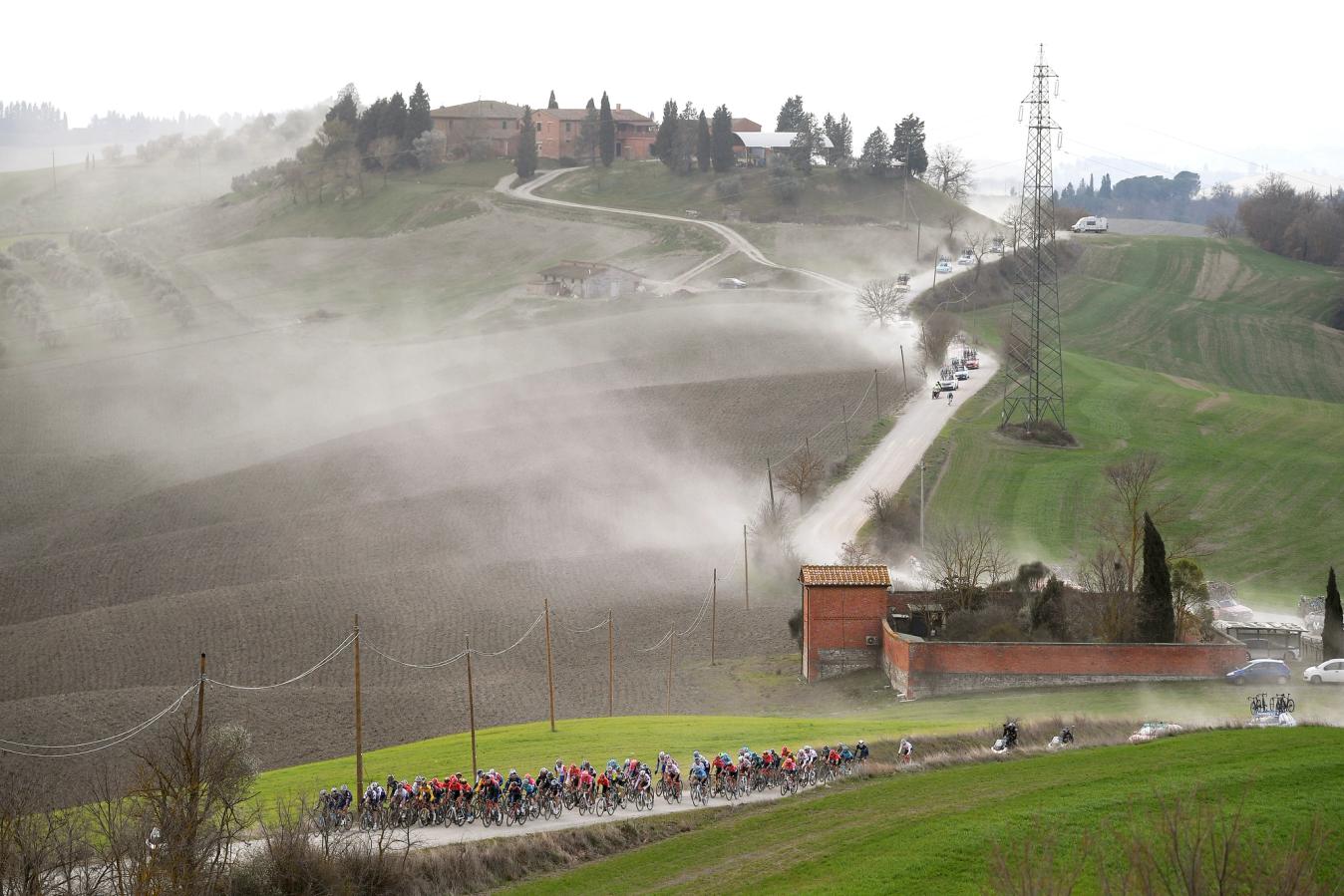
© Getty Images
The riders kick up clouds of dust as they tackle the gravel tracks of Strade Bianche
About Strade Bianche
Strade Bianche is a modern success story of professional cycling, becoming one of the most popular and prestigious Classics despite being less than 20 years of age. What it lacks in history it makes up for with its iconic gravel tracks, or ‘white roads’ that lend the race its name, and a route that is more demanding than its length would suggest. In fact, the men’s route has been significantly increased this year from 185km to 214km, which has only added fuel to the cause that feels Strade Bianche should be added as a sixth Monument.
Read more: Should Strade Bianche be considered a Monument?
Whether it needs that status, and whether that status is a little vague anyway, is by the by as the peloton barrels through the rolling Tuscan countryside, and then the winners emerge in Siena’s old town for a finale that’s almost as iconic as the gravel.
Did you know? Three wins gets you a sector named in your honour, so the pivotal five-star Monte Sante Marie is known as the ‘Settore Fabian Cancellara’.
Ronde van Drenthe
- When: 10 March
- Where: Netherlands
- First edition: 2007
- 2024 winner: Lorena Wiebes
Race Report & Results: Ronde van Drenthe

© Getty Images
Lorene Wiebes wins the 2024 Ronde van Drenthe
About Ronde van Drenthe
The Ronde van Drenthe is a rare case where the women’s race is more important, prestigious, and prioritised than the men’s. Whereas the men’s race has been scrapped for 2024 and was a third-category event before that, the women’s Ronde van Drenthe has been a staple of the Women’s WorldTour since its creation in 2016. The race takes place in the north of the Netherlands and is often won by a sprinter, albeit a versatile one who can cope with the repeat ascents of the VAM-berg climb.
Did you know? The VAM-berg is a rubbish climb – it’s essentially a track slapped over a massive landfill site.
Nokere Koerse
- When: 13 March
- Where: Flanders, Belgium
- 2024 winners: Tim Merlier, Lotte Kopecky
Nokere Koerse is a Belgian race that would fall under the semi-classic moniker. Taking place in Flanders, it’s another one that tends to see open racing but doesn’t blow the bunch to smithereens, so group finishes are common, although the finish line is placed on the Nokereberg, making it a punishing uphill sprint on cobblestones.
Milano-Torino
- When: 13 March
- Where: Italy
- 2024 winner: Alberto Bettiol
Milano-Torino has changed beyond recognition in recent years. It used to be part of the Autumn swing of Italian Classics, finishing by the Basilica atop the Superego climb in Turin. Now, since the pandemic, it’s a flat race in the spring, positioned vaguely as a warm-up for Milan-San Remo but, for one of the oldest cycling races in existence, it’s lacking any strong identity at the moment.
Grand Prix de Denain
- When: 14 March
- Where: France
- 2024 winner: Jannik Steimle
The GP de Denain is as close as you'll get to Paris-Roubaix, taking place on some of the same cobblestone sectors in the same corner of northeast France. However, it has never really gained much prestige and hasn't managed to tie into any meaningful Roubaix build-up narrative, so it's firmly in the semi-classic camp, but it's nevertheless an entertaining gritty day of action.
Bredene Koksijde Classic
- When: 15 March
- Where: Belgium
- 2024 winner: Luca Mozzato
Race Results: 2024 Bredene Koksijde Classic
Another race that falls into the semi-Classic category, the Bredene Koksijde Classic features windswept terrain in northern Belgium but is flat enough to usually bring about a bunch sprint of some description.
Milan-San Remo
- When: 16 March
- Where: Italy
- First edition: 1907
- Nicknames: La Primavera (the Spring), La Classicissima (the great Classic)
- 2024 winner: Jasper Philipsen
Race Report & Results: Milan-San Remo

© Getty Images
The Poggio is the pivotal climb in Milan-San Remo
About Milan-San Remo
Milan-San Remo is the first Monument Classic of the season, one of the oldest and most prestigious races, and certainly the longest. Coming in around the 300km mark, it’s a true test of endurance, even if the terrain itself is not all that demanding. Milan-San Remo is often described as the easiest race to finish but the hardest to win, given the myriad possible outcomes.
The race starts in Milan – or nearby – and heads over the Turchino Pass before dropping down to the Ligurian coast in a symbolic passage from winter to spring. The race dips inland occasionally for some climbing, including the Cipressa and the three punchy kickers known as the ‘tre capi’, but Milan-San Remo is all about the Poggio.
- Read more: A beginner's guide to Milan-San Remo
It's a relatively short effort but this is where the tussle between the attackers and the sprinters plays out, with any gaps needing to be capitalised upon on the vertiginous descent into San Remo. The descent can be just as pivotal, as Matej Mohorič proved when he used a dropper post to swoop to victory in 2022. It's often all to play for in the final couple of kilometres onto the Via Roma, which has also played host to full bunch sprints and late tactical attacks.
Milan-San Remo is a race that divides opinion, sometimes within the same holder. Not much happens for six hours but somehow those final 15 minutes over the Poggio make up for it all.
Did you know?
Trofeo Alfredo Binda
- When: 17 March
- Where: Lombardy, Italy
- First edition: 1974
- 2024 winner: Elisa Balsamo
Race Report & Results: Trofeo Alfredo Binda
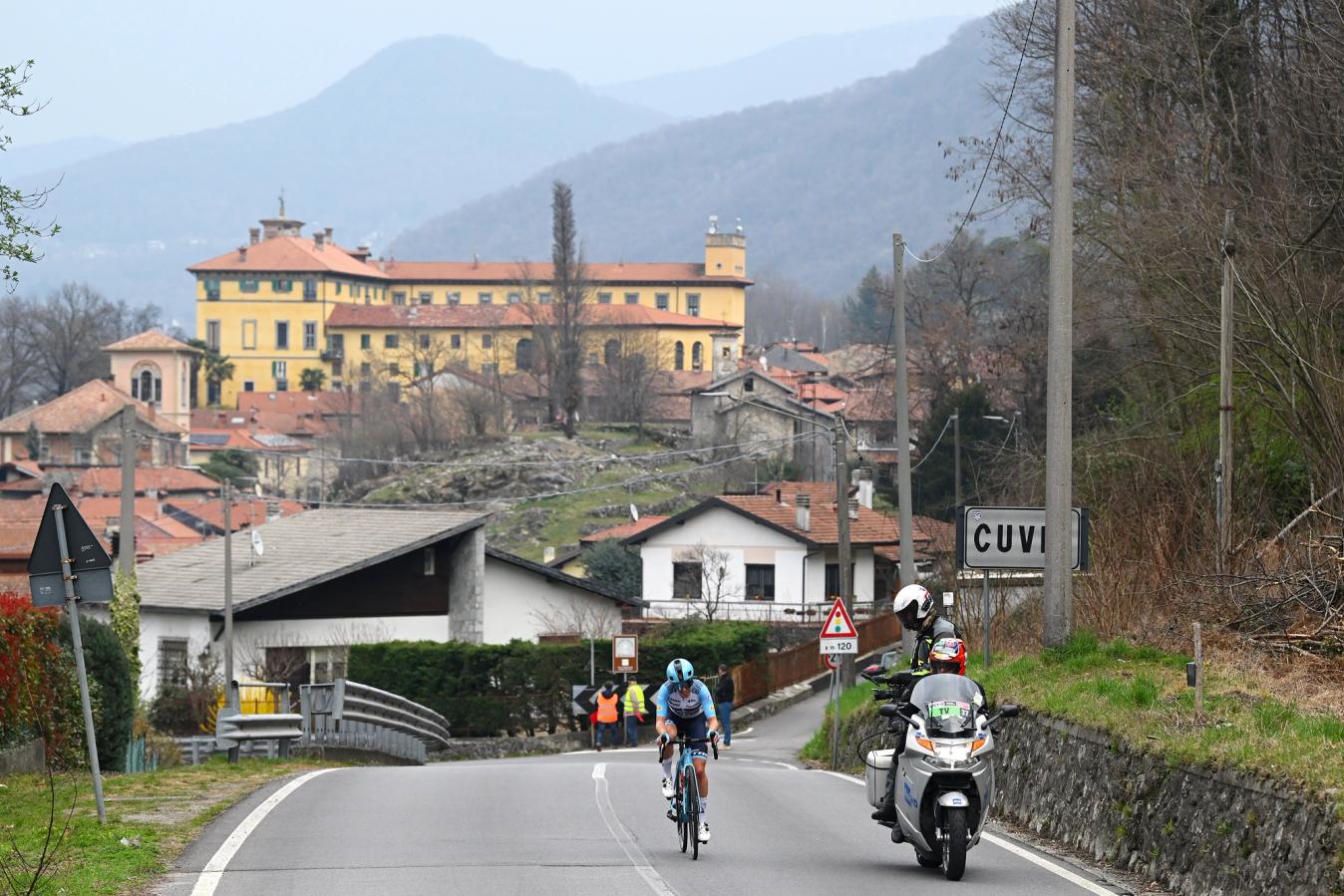
© Getty Images
Trofeo Binda is set against the hills of Lombardy
About Trofeo Alfredo Binda
There’s no women’s Milan-San Remo, but some would argue there’s no need, with the Trofeo Alfredo Binda offering an Italian Classic that’s among the oldest and most prestigious events of the season. If you were to draw up a list of women’s Monuments, this would be on there, and a glance back through the honours list only underlines its heritage. The race takes place in Lombardy in northern Italy on a circuit that features the Casalzuigno and Orino climbs before the run down to the finish in Cittiglio. It’s hilly enough to rule out a proper bunch sprint, but not enough to weed out the versatile sprinters, making this an open-ended race that can be won in several ways.
Did you know? Italians dominate the history books with 27 winners to the next-best of six from the UK, but the home nation has ‘only’ won five so far this century.
Classic Brugge-De Panne
- When: 20 March (men), 21 March (women)
- Where: Flanders, Belgium
- First edition: 1977
- 2024 winners: Jasper Philipsen, Elisa Balsamo
Race Report & Results: Classic Brugge-De Panne men
Race Report & Results: Classic Brugge-De Panne women
The Classic Brugge-De Panne kicks off the main period of the Flemish Spring, where all eyes will be focused through the Tour of Flanders 10 days later. It’s not a major race, though, and true Flanders contenders will be in short supply. The race takes place in north west Belgium near the North Sea coast, and is liable to end in a bunch sprint, but the key characteristic is De Moeren, an exposed area of swampland notorious for ripping races apart if the wind is up.
Did you know? The men’s race used to be the ‘Three Days of De Panne’, taking place in the week of Flanders until it was shunted from its slot and forced to rebrand in 2018.
E3 Saxo Classic
- When: 22 March
- Where: Flanders, Belgium
- First edition: 1958
- 2024 winner: Mathieu van der Poel
Race Report & Results: E3 Saxo Classic
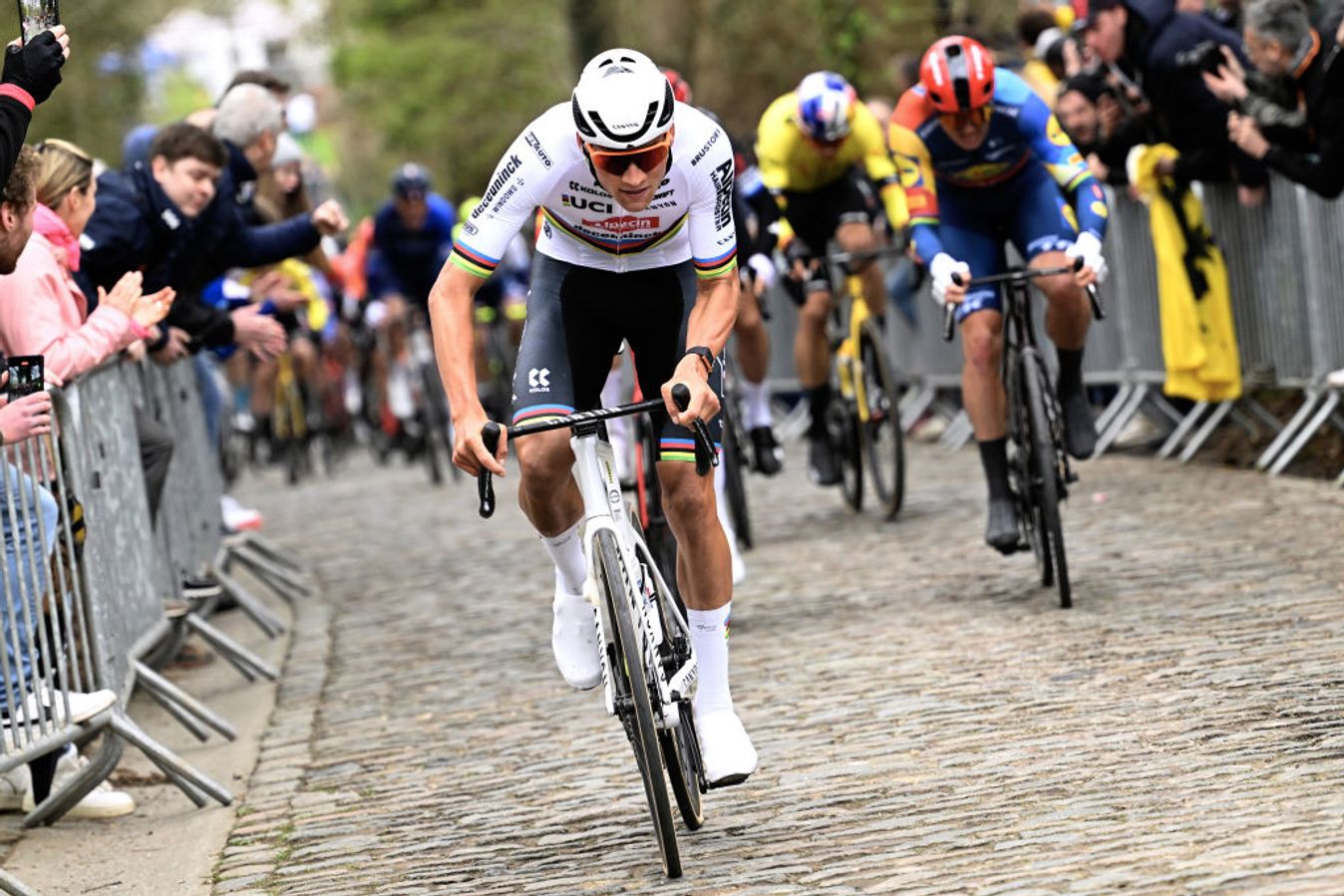
© Getty Images
Mathieu van der Poel storms to victory at E3
About E3 Saxo Classic
This is where things get serious in Belgium. The E3 Saxo Classic is often described as the ‘dress rehearsal’ for the Tour of Flanders, taking in many of the same cobbled climbs just over a week out from the Holy Sunday. Put simply, if you’re not firing here, there’s no time to correct your form, and that’s why this has been such a reliable indicator of Flanders success. Nine riders have done the double, but the podium correlation is even more striking.
The race starts and finishes in Harelbeke, heading over key Flanders climbs like the Taaienberg, Oude Kwaremont, and Paterberg. It finishes with a rather random lap of a suburban housing estate but the race is always in small groups by that point anyway. Expect the sport sections of the Flemish weekend papers to go into overdrive as Flanders mania really ramps up.
Did you know? The race takes its name from a motorway, which doesn’t even exist anymore.
Gent-Wevelgem
- When: 24 March
- Where: Flanders, Belgium
- First edition: 1934 (men), 2014 (women)
- 2024 winners: Mads Pedersen, Lorena Wiebes
Race Report & Results: Gent-Wevelgem men
Race Report & Results: Gent-Wevelgem women
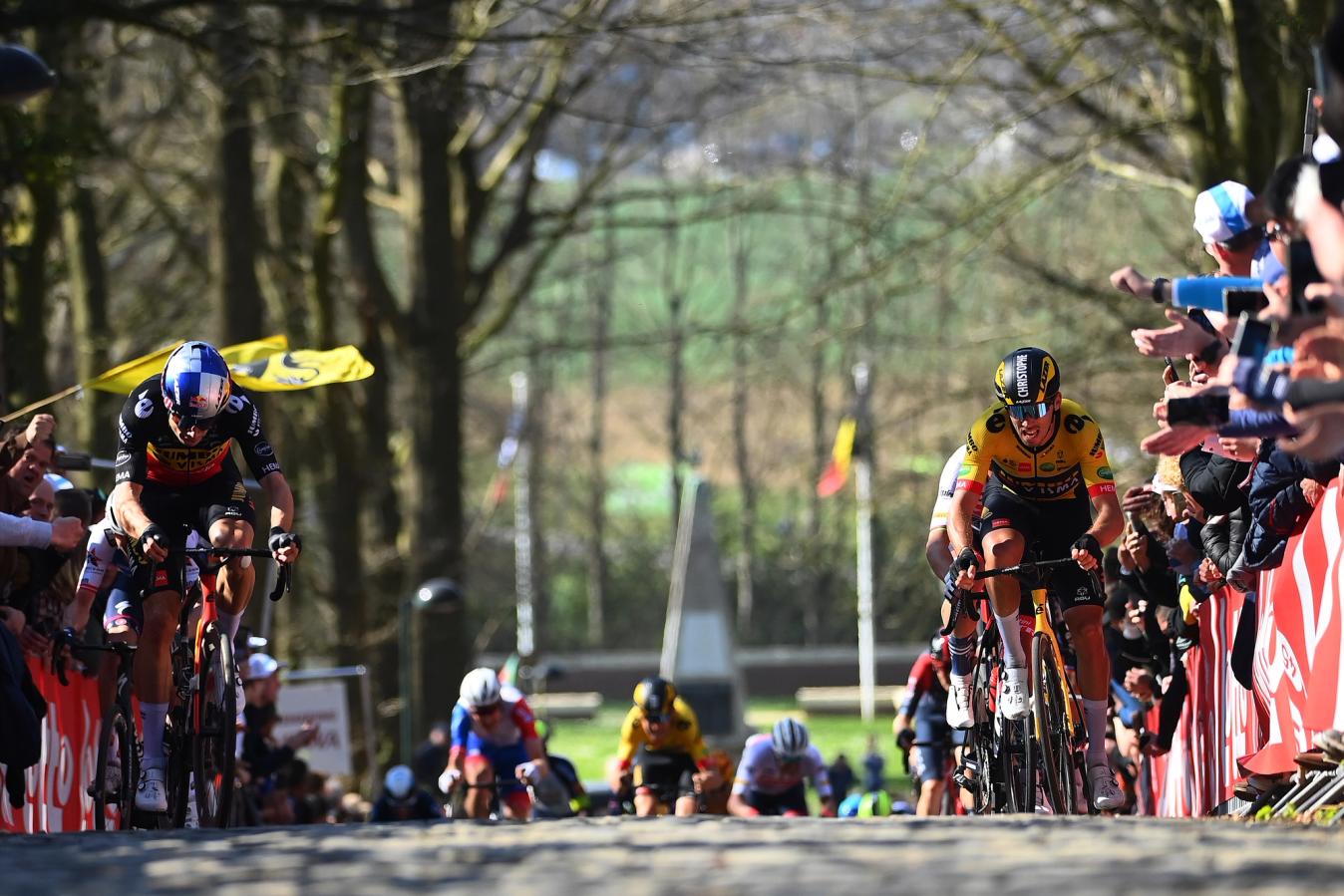
© Getty Images
The steep Kemmelberg is the iconic climb of Gent-Wevelgem
About Gent-Wevelgem
Gent-Wevelgem is something of an outlier in the Flemish Classics in that it explores a different corner of the region, heading west to the French border. As such, it has a slightly different flavour, and isn’t quite a Flanders build-up in the same way as E3, but it’s nevertheless a massively prestigious race in its own right.
The race is characterised by the wind-swept passage through De Moeren, and then by the iconic Kemmelberg climb, while the organisers have also added some gravel into the mix in recent years. That has come as part of an increased push to align the race with World War Remembrance, the race passing through old battlefields and memorials, most notably in Ypres, where the race now starts (miles away from Gent).
On the sporting side, the race is another that’s poised between the sprinters and attackers, with a long run-in from the final ascent of the Kemmelberg to the line in Wevelgem.
Did you know? Gent-Wevelgem started out in the autumn, before moving to its spring slot in 1947.
Dwars door Vlaanderen
- When: 27 March
- Where: Flanders, Belgium
- First edition: 1945 (men), 2017 (women)
- 2024 winners: Matteo Jorgenson, Marianne Vos
Race Report & Results: Dwars door Vlaanderen men
Race Report & Results: Dwars door Vlaanderen women
Dwars door Vlaanderen used to be known as something of a sprinter’s Classic, but its increasing difficulty, its replacing of De Panne in the pre-Flanders slot, and the ever-more-aggressive style of racing has given it more of a true Classics feel. Again, it delves into the heart of the Flemish Ardennes for a decent helping of climbs as it heads between Roeselare – which has a museum dedicated to cycling – and Waregem, which is how many still refer to the race.
Did you know? The race name literally means ‘Through Flanders’.
Tour of Flanders / Ronde van Vlaanderen
- When: 31 March
- Where: Flanders, Belgium
- First edition: 1913 (men), 2004 (women)
- Nicknames: Vlaanderens Mooiste (Flanders' finest)
- 2024 winners: Mathieu van der Poel, Elisa Longo Borghini
Race Report & Results: Tour of Flanders men
Race Report & Results: Tour of Flanders women
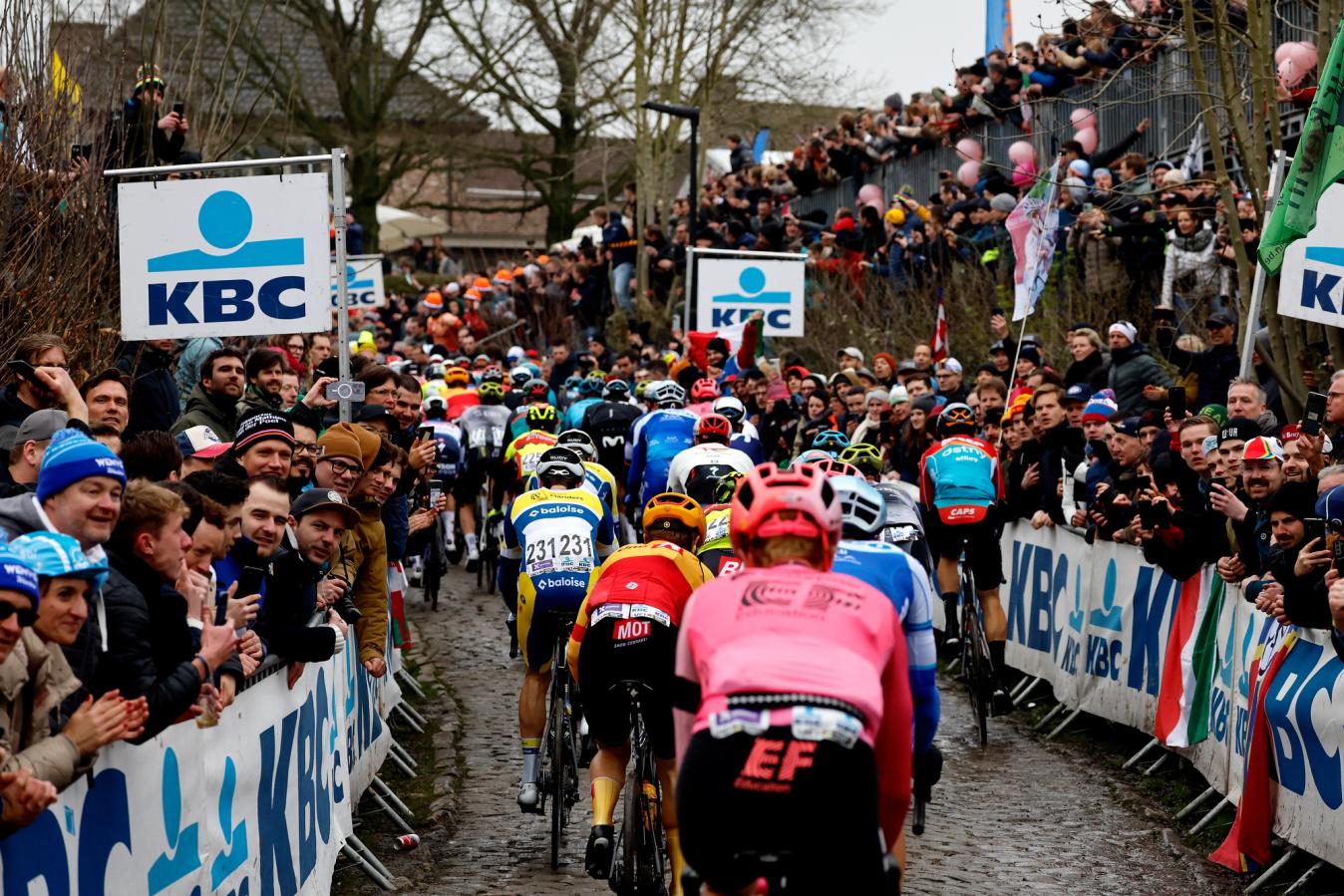
© Getty Images
The Tour of Flanders always brings the crowds out
About Tour of Flanders
The big one. The Tour of Flanders is what bike racing in Belgium is all about. It’s what it’s all been building up to, and it’s what practically a whole nation will be fixated upon on Holy Sunday. The religious terminology is no joke. It may be Easter, but cycling is a quasi-religious affair in these quarters, and the crowning glory of the Flemish ‘Holy Week’ is treated with utter devotion.
One of the five Monuments, it has a huge amount of prestige and an incredibly rich history, but it has also been quick to modernise, with race organisers Flanders Classics going in for a circuit style route that allows for huge (and hugely lucrative) VIP tents on the Oude Kwaremont climb, which is turned into a sort of stadium. Purists may prefer the more natural stadium of the iconic Muur van Geraardsbergen, which has been reduced to a bit-part player but the race still delivers with a full dose of the best the Flemish Ardennes has to offer, over a leg-sapping 250km distance. The new finale features the Oude Kwaremont and short-but-steep Paterberg in combination, before a 13km run-in to Oudenaarde, where there’s only ever a solo rider or very small group left.
It’s a massive occasion and the atmosphere at the start, which now switches between Antwerp and Bruges, is the best in pro cycling.
Did you know? A local farmer, legend has it, laid cobblestones on the Paterberg in a bid to have it included in the Tour of Flanders. It worked.
Scheldeprijs
- When: 3 April
- Where: Flanders, Belgium
- First edition: 1907 (men), 2021 (women)
- 2024 winners: Tim Merlier, Lorena Wiebes
Race Report & Results: Scheldeprijs men
Race Report & Results: Scheldeprijs women
The Tour of Flanders does not signal the end of the Flemish swing, as Scheldeprijs follows on the Wednesday ahead of Paris-Roubaix. A historic race, its prestige has waned in recent years, as it can’t touch the Ronde and doesn’t really serve as a meaningful stepping stone to Roubaix. It’s very much a sprinter’s Classic, with some early exposed sections near the Dutch border and along the river Scheldt, plus a few cobbles, but lots of flat terrain and little chance of upsetting the sprint trains.
Did you know? Scheldeprijs used to be referred to as the ‘unofficial sprinters’ world championship’. Marcel Kittel won it five times.
Paris-Roubaix
- When: 7 April
- Where: France
- First edition: 1896 (men), 2021 (women)
- Nicknames: L'Enfer du Nord (The Hell of the North)
- 2024 winners: Mathieu van der Poel, Lotte Kopecky
Race Report & Results: Paris-Roubaix
Race Report & Results: Paris-Roubaix Femmes

© Getty Images
Paris-Roubaix features notorious sectors of cobblestones
About Paris-Roubaix
Paris-Roubaix is arguably the most iconic Classic cycling has to offer. If you were to ask a casual observer to name a race outside the Tour de France, they may well mention that one on the cobblestones. Granted, many of the Flemish Classics have cobblestones, but not like this. The pavé, as it’s known, of north east France is something else entirely. The cobblestones themselves can be like giant, jagged rocks, and the sectors themselves are often kilometres long. Unlike in Flanders, there are no hills to be found, so this is a bone-rattling war of attrition in which bad luck can play just as big a part as bad legs.
Some of the sectors – Carrefour de l’Arbre, Trouée d’Arenberg – are legends in their own right, but adding to the iconography is the unique finish on the old outdoor velodrome in Roubaix, where the riders must complete a lap and a half as the finale suddenly turns into a track race. The grassy centre of the track then becomes a dumping ground of stricken bodies. It’s nicknamed the ‘Hell of the North’ for a reason and the post-race faces – caked either in mud or dust depending on the conditions – would indicate this is the toughest ordeal in pro cycling.
Did you know? There’s a charity devoted to the race. The ‘Amis [friends] of Paris-Roubaix’ campaign to protect these cobblestone tracks from being paved over, and carry out repairs to make sure each cobblestone is in tip-top shape each Spring.
Brabantse Pijl
- When: 10 April (men & women)
- Where: Belgium
- 2024 winners: Benoît Cosnefroy, Elisa Longo Borghini
Race Report & Results: De Brabantse Pijl men
Race Report & Results: De Brabantse Pijl women
This is a race that falls between the Flemish Classics and the Ardennes Classics. On the one hand, it has cobbles and is run by the Flanders Classics behemoth. On the other, it takes place on hillier terrain, some in Flanders but mainly in Wallonia in the French-speaking south of Belgium. That’s why you’ll often hear it referred to as a bridge between the two.
Did you know? Reflecting the regional border straddling, the race comes with two names – La Flèche Brabançonne being the French. Both names mean ‘the Brabant arrow’
Amstel Gold Race
- When: 14 April
- Where: Limburg, Netherlands
- First edition: 1966 (men), 2001 (women)
- 2024 winners: Tom Pidcock, Marianne Vos
Race Report & Results: Amstel Gold Race men
Race Report & Results: Amstel Gold Race women
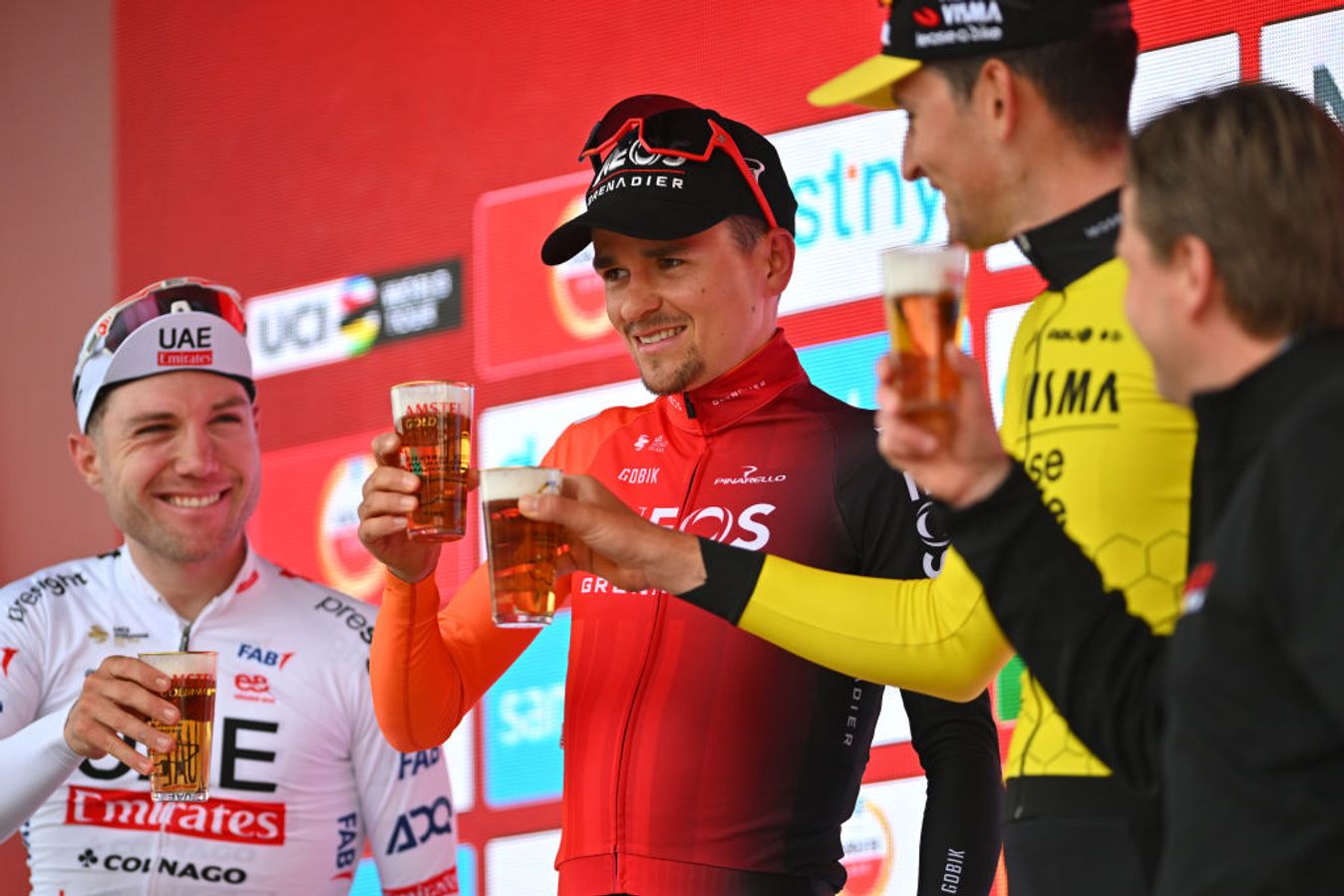
© Getty Images
Beers on the podium of the Amstel Gold Race
About Amstel Gold Race
The true Ardennes Classics kick off with a race that, in classic pro cycling fashion, doesn’t really take place in the Ardennes. While La Flèche Wallonne and Liège-Bastogne-Liège are firmly fixed in the Belgian Ardennes, the Amstel Gold Race takes place in the hills of Limburg in southern Netherlands. Still, it’s very much part of what’s seen as an ‘Ardennes trio’.
The course has chopped and changed over the years but it’s essentially a rollercoaster through the twisting warren of punchy climbs and narrow lanes in the farming countryside. The emblematic climb is the Cauberg in Valkenburg, which used to host the finale until the race became a bit of a waiting game. The men’s finale was re-modelled for a more open affair in 2017, the same year the women’s race was relaunched after a 14-year hiatus, with the women using the finish that saw the men finish 2km beyond the top of the Cauberg between 2013 and 2016.
Did you know? Yes, that’s the beer that’s the title sponsor – since its inception no less. The winners are given a giant glass of the stuff on the podium.
La Flèche Wallonne
- When: 17 April
- Where: Wallonia, Belgium
- First edition: 1936 (men), 1998 (women)
- 2024 winners: Stevie Williams, Kasia Niewiadoma
Race Report & Results: La Flèche Wallonne men
Race Report & Results: La Flèche Wallonne women
.jpg?w=1348&auto=format)
© Getty Images
Kasia Niewiadoma wins atop the Mur de Huy
About La Flèche Wallonne
The ‘Walloon Arrow’ is the most predictable of the Spring Classics, in that it invariably finishes with a mad dash up the Mûr de Huy. But what a dash it is. The ‘Wall of Huy’ is one of pro cycling’s iconic locations, its gradients topping 20% through the famous S-bend mid-section of the climb. With the races largely uneventful and non-tactical, it all comes down to legs and timing in the final few minutes. Such is the severity of the climb, a lot can change in the space of just a few meters and the Mur does lift the pulse in spite of what’s gone before.
Did you know? Anna van der Breggen had an incredible seven-year stranglehold on this race between 2015 and 2021.
Women's Top 5
Liège-Bastogne-Liège
- When: 21 April
- Where: Wallonia, Belgium
- First edition: 1892 (men), 2017 (women)
- Nicknames: La Doyenne (The Old Lady)
- 2024 winners: Tadej Pogačar, Grace Brown
Race Report & Results: Liège-Bastogne-Liège men
Race Report & Results: Liège-Bastogne-Liège women
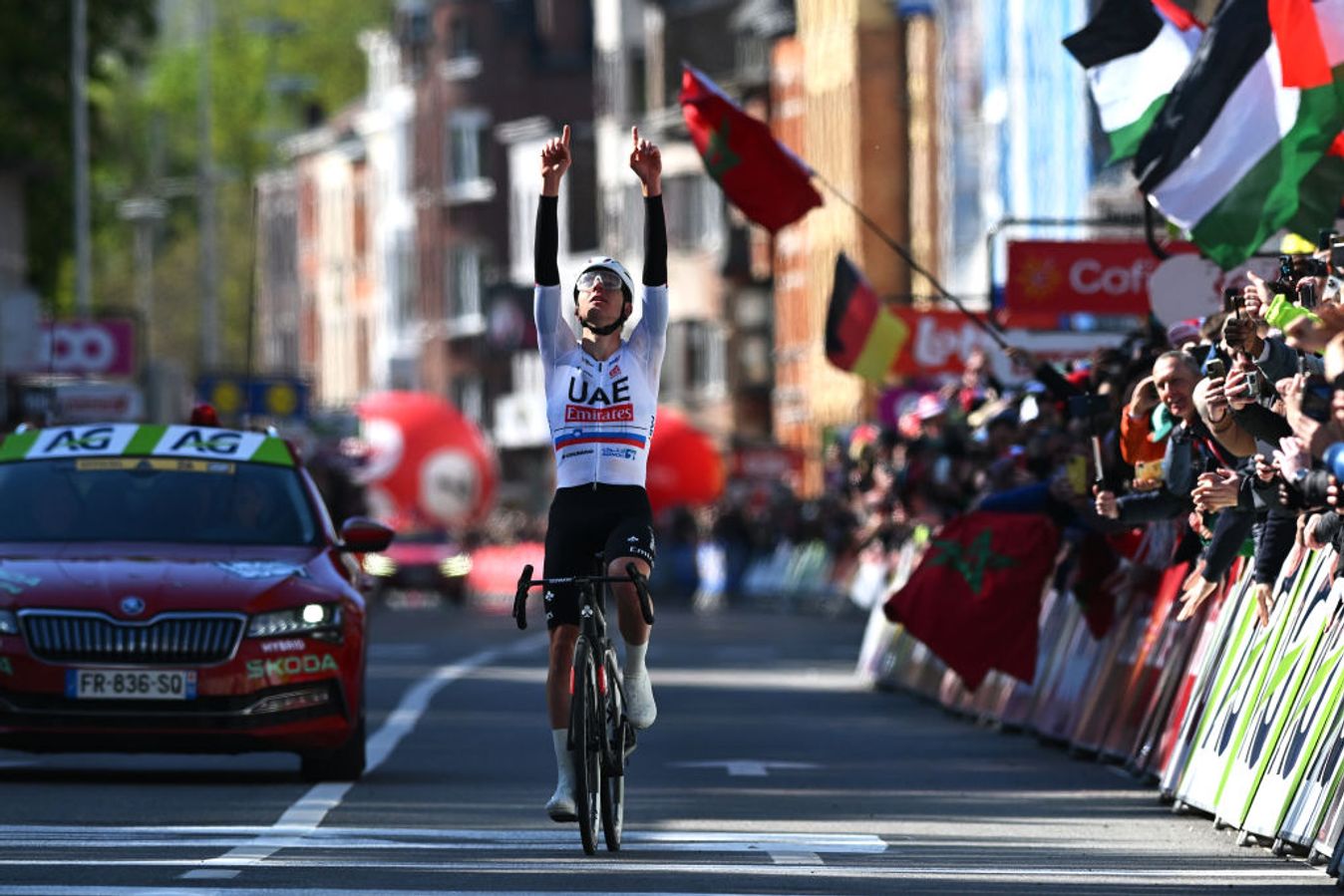
© Getty Images
Tadej Pogačar wins Liège for a second time in 2024
About Liège-Bastogne-Liège
The final Classic of the Spring comes in the form of Liège-Bastogne-Liège, a giant of the sport and the oldest of the Monuments. Known affectionately as ‘La Doyenne’ – the old lady – the race has faced question marks over its entertainment factor in the past but never its prestige.
As the name suggests, the race starts in Liège, heads south towards Bastogne, then comes back, with the women’s race simply starting in Bastogne. The routes tackle a string of climbs - Côte de la Redoute being the most famous - in the Walloon Ardennes that are longer and more demanding than anything seen in the Classics to this point. In fact, while the Amstel Gold Race still feels like a Classics rider’s race and the Flèche Wallonne is a puncheur’s paradise, Liège brings the true climbers into play, and that’s why you’ll get Grand Tour winners lining up on the start line.
The old draggy finale in Ans came to be seen as formulaic and the race has had a new lease of life since returning to Liège in 2019, with the Côte des Roche-aux-Faucons acting as the final climb 15km from the line. It may still lack a little of the pizzazz of some of the other Monuments but there’s a weight to Liège that maintains its status as one of the most important days of the year, and the list of winners in the women’s race – Anna van der Breggen, Lizzie Deignan, Annemiek van Vleuten, Demi Vollering – shows that event has rapidly got up to speed.
Did you know? Bernard Hinault suffered permanent finger damage due to frostbite when he soloed to victory through a blizzard in 1980.
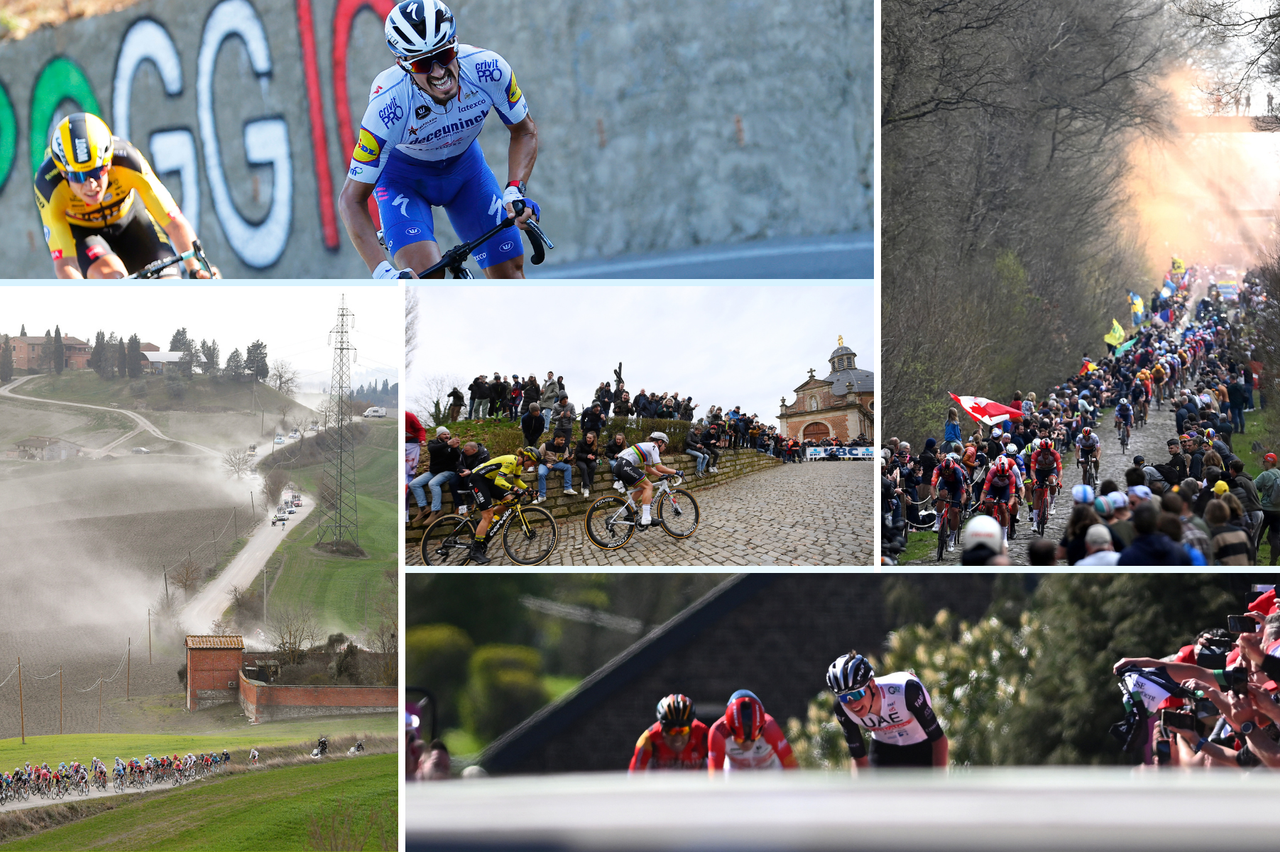






































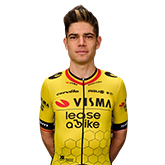



















































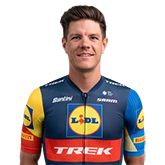






















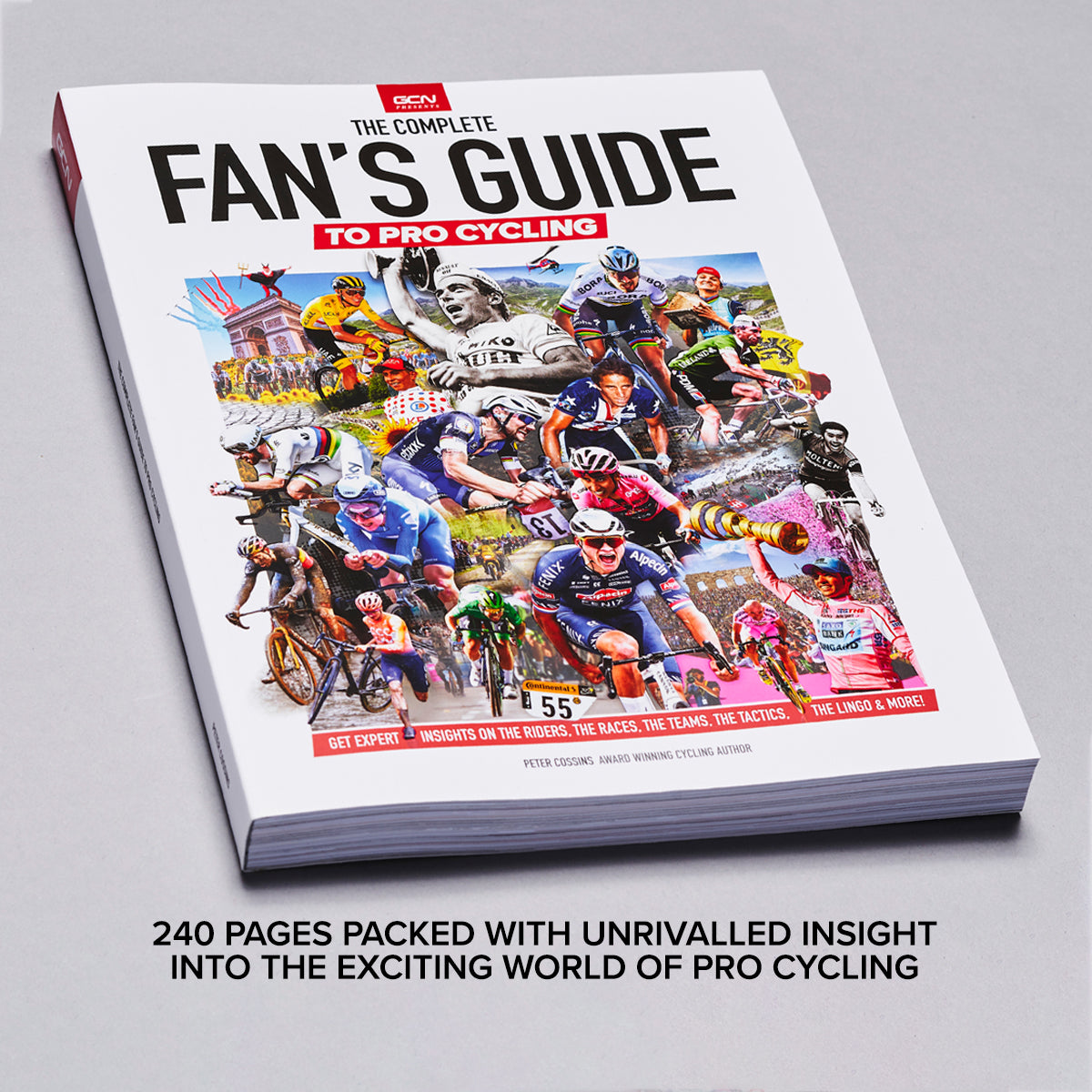






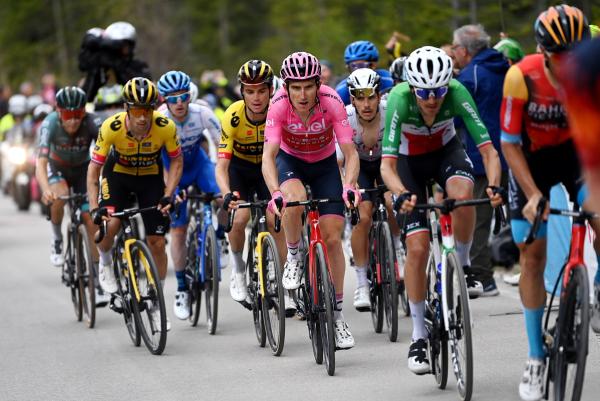
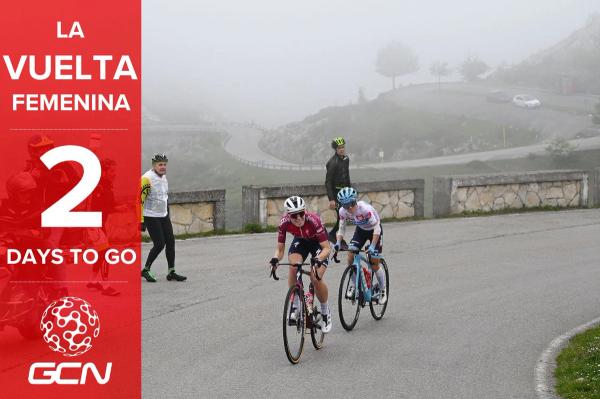
.jpg?w=600&auto=format)
.jpg?w=600&auto=format)